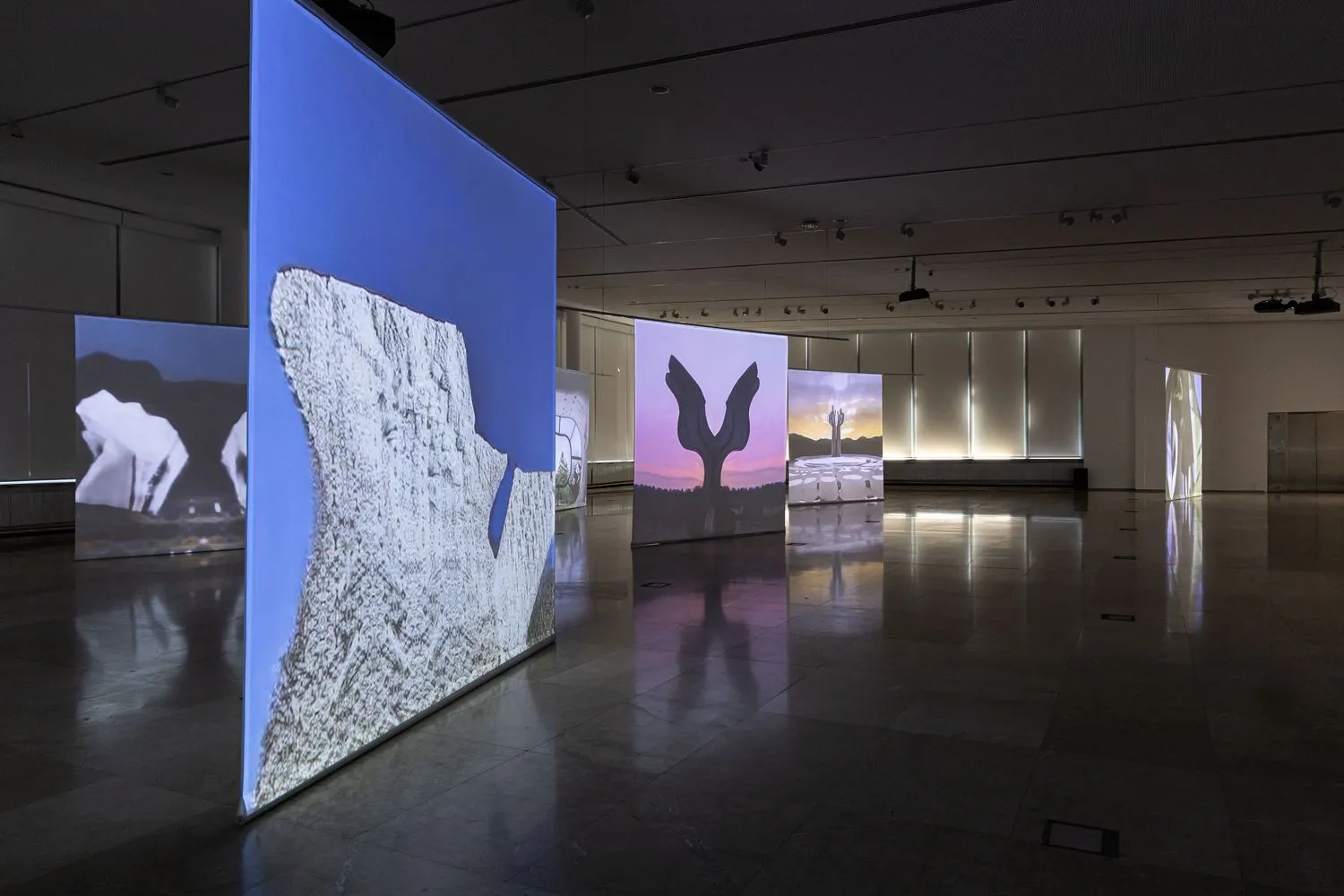 The Pilgrimage by Ana Miljački at the Museum of Yugoslavia. Courtesy of the Museum of Yugoslavia.
The Pilgrimage by Ana Miljački at the Museum of Yugoslavia. Courtesy of the Museum of Yugoslavia. The im/permanence of memory and its social and political conditioning lie at the heart of The Pilgrimage, recently on view at the Museum of Yugoslavia (formerly the May 25th Museum) in Belgrade. Authored by Ana Miljački, the exhibition consisted of a six-channel video installation accompanied by a soundscape of diverse audio fragments from the Yugoslav past.
The videos, projected on six textile screens suspended from the ceiling, featured a selection of monuments that have drawn worldwide attention in recent years, culminating in the 2018 MoMA exhibition Towards a Concrete Utopia: Architecture in Yugoslavia, 1948-1980, and have since become somewhat of an internet sensation for their modernist-verging-on-sci-fi structures. However, their political and social significance remained largely obscured amidst tendencies to sensationalize their aesthetics.

Besides the screens, large and yet strangely ethereal in the vast space of the museum, a wall to the left of the entrance featured locations of the presented monuments, mapped as within an invisible Yugoslav map, tracing their architects, locations, and dedications across the white surface. They included the monument in the Šumarice Memorial Park, the Stone Flower dedicated to the victims of the Jasenovac concentration camp, the Monument to the Revolution in Kozara, the Partisan Memorial Cemetery in Mostar, the Monument on Petrova Gora, the Monument to the Ilinden Uprising in Kruševo, the Monument in Ilirska Bistrica, as well as the Monument to the Fallen Fighters in Barutana.
Depending on the moment visitors entered the large hall on the museum’s first floor, they encountered different situations. The videos looped and either a landscape of abstract fragments was shown; the forms that could remotely resemble and recall the well-known monuments from the Yugoslav past; or animated images of these monuments, or spomeniks, as they are often referred to in the West. For some viewers, the images summon familiar visuals from Yugoslav history; for others, they could be hard to place and define. The loop transversed the registers of familiarity and ambiguity, the realism in presenting forms and familiar vistas, and digitized synthetic landscapes of colorful abstractions that reveal little about their origin or figural attachments.
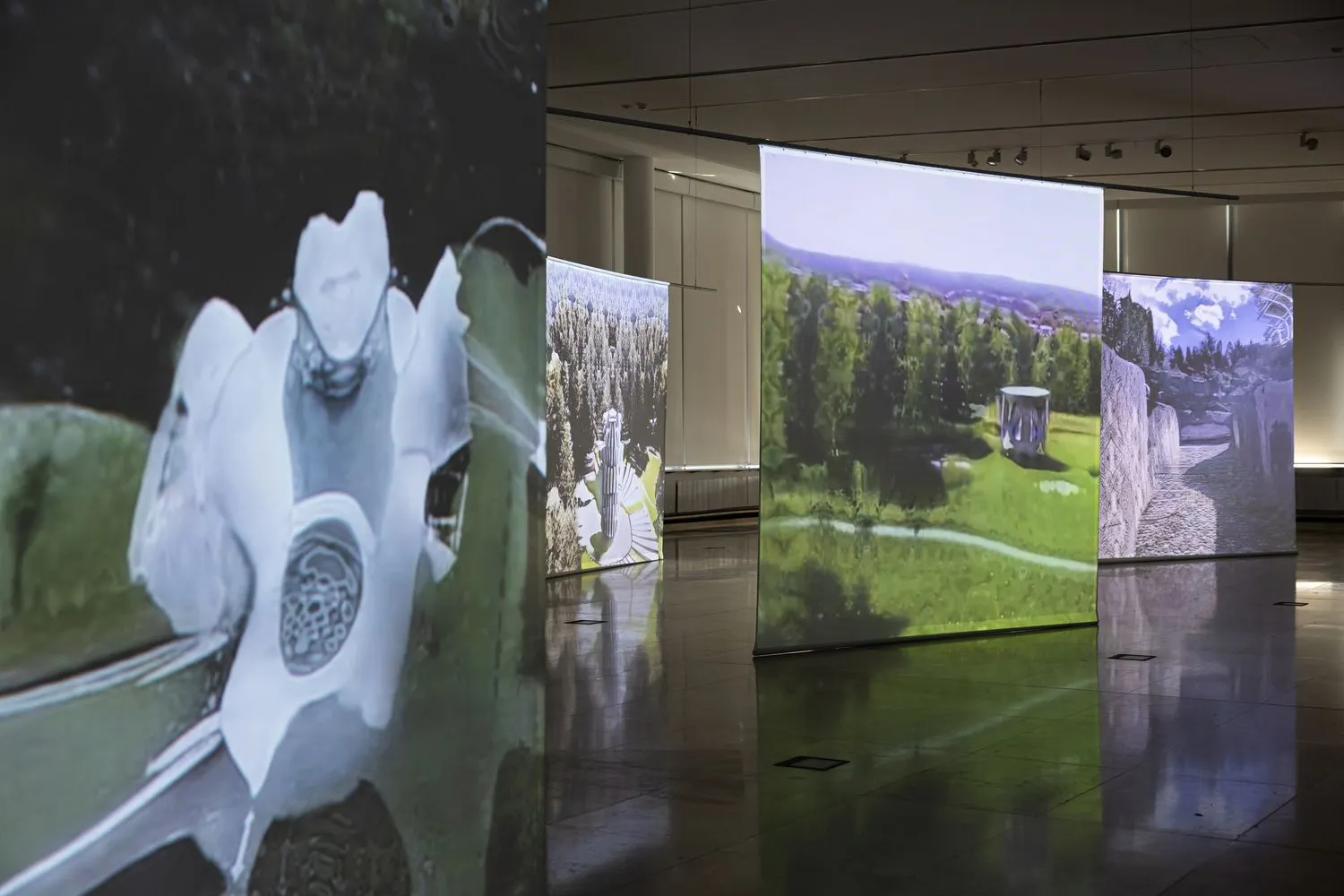
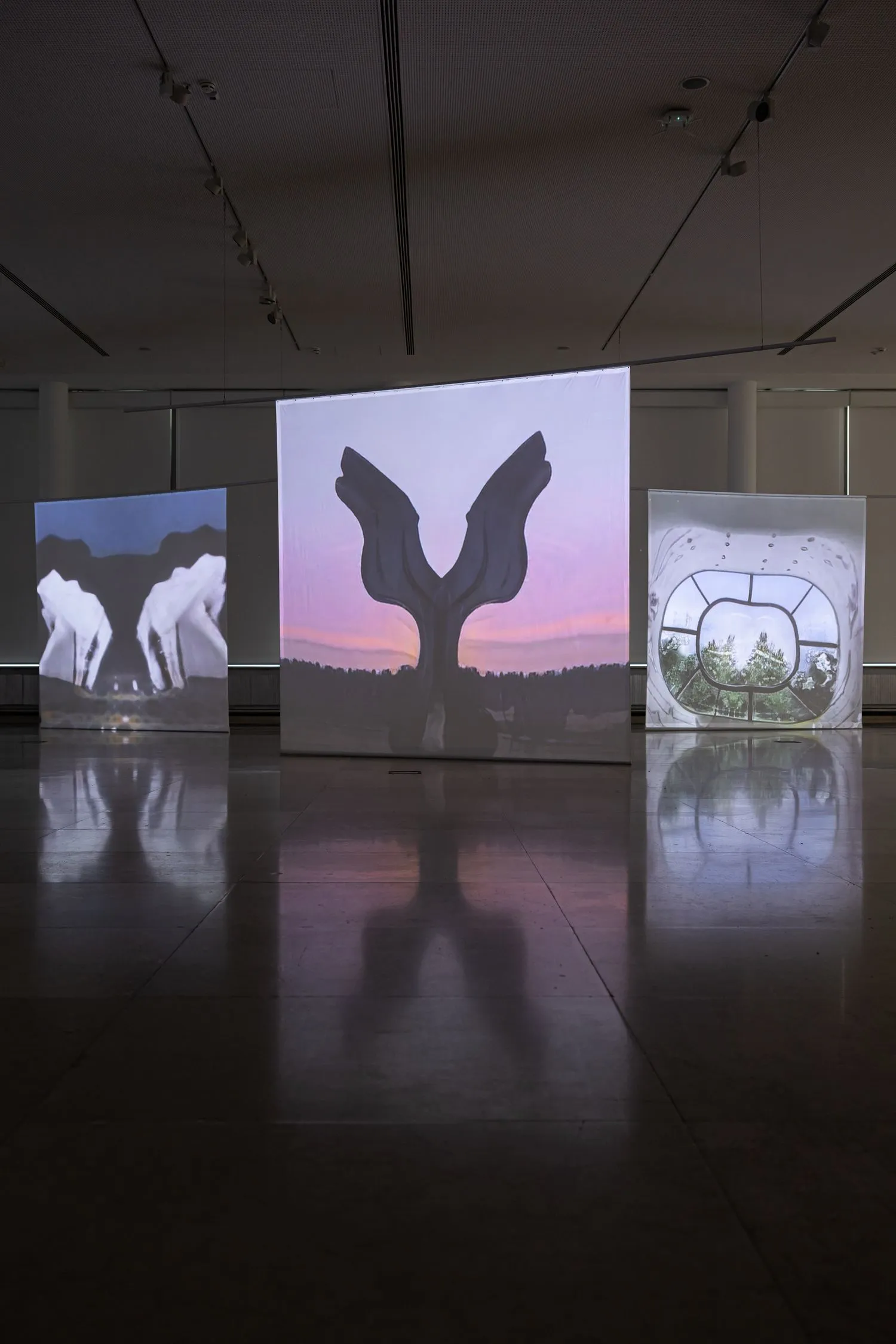
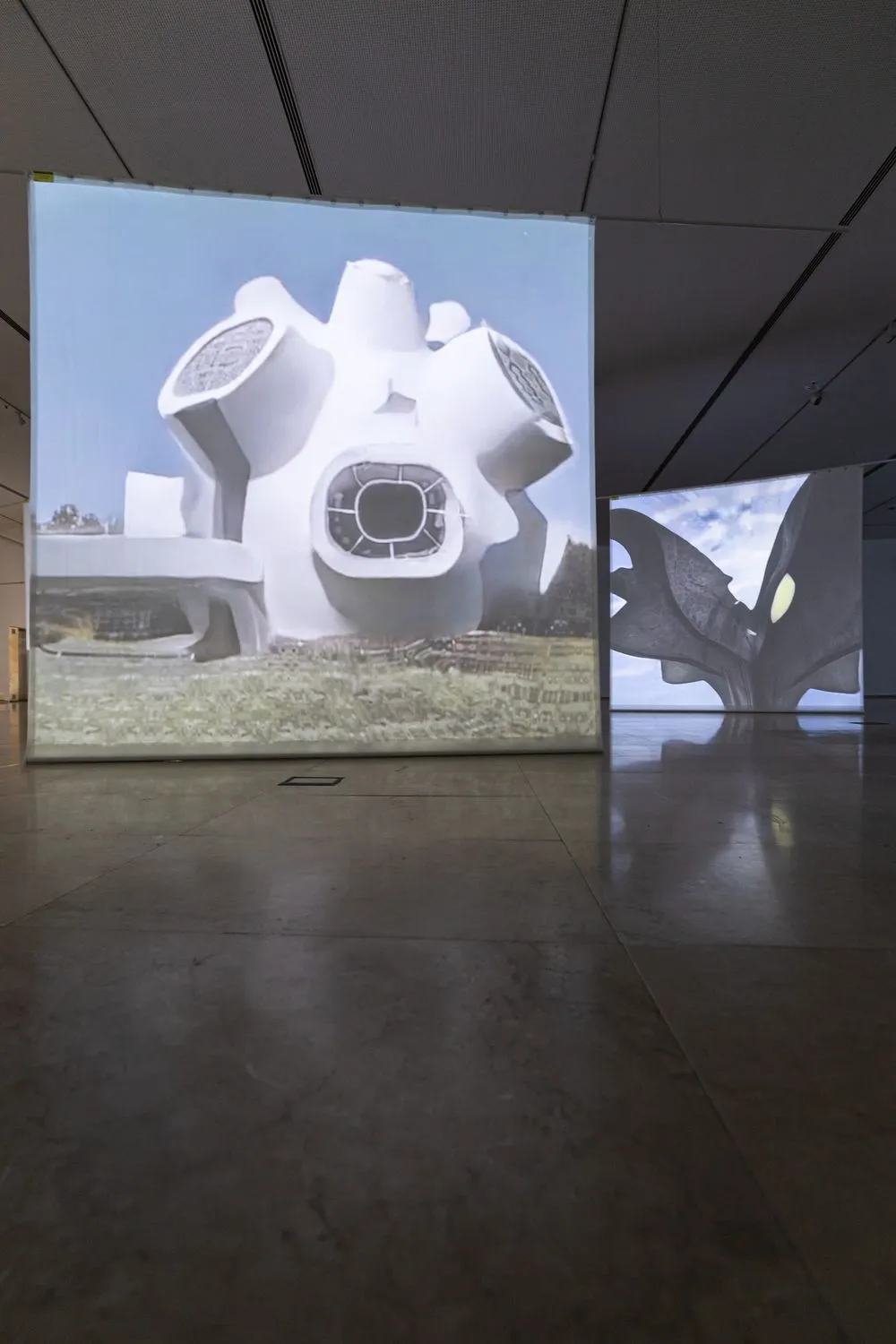
Miljački's initial inspiration came in 2022, when the Partisan Memorial Cemetery in Mostar was vandalized. In a climate marked by rising nationalism, capitalist exploitation, and the consequential Europeanization processes that the region suffers from, the socialist past and its heritage are increasingly under attack.
Focusing on the concept of pilgrimage and the tradition of organized visits to these monuments that lasted until 1991, the author accentuated their presence and historical bearing in the current moment, and visual excellence through a collage of videos that disintegrated, zoomed in and out, and traced the surfaces of these monumental artistic endeavors, without sliding into sensationalism or spectacle. The animation, realized with the help of AI "Stane" (StyleGAN3) at the Critical Broadcasting Lab at the Massachusetts Institute of Technology (MIT) where Miljački teaches, combined archival and new photo documentation of the monuments, resulting in a series of interpolations that sustain the dynamic of the work while exploring the changing status of memory.
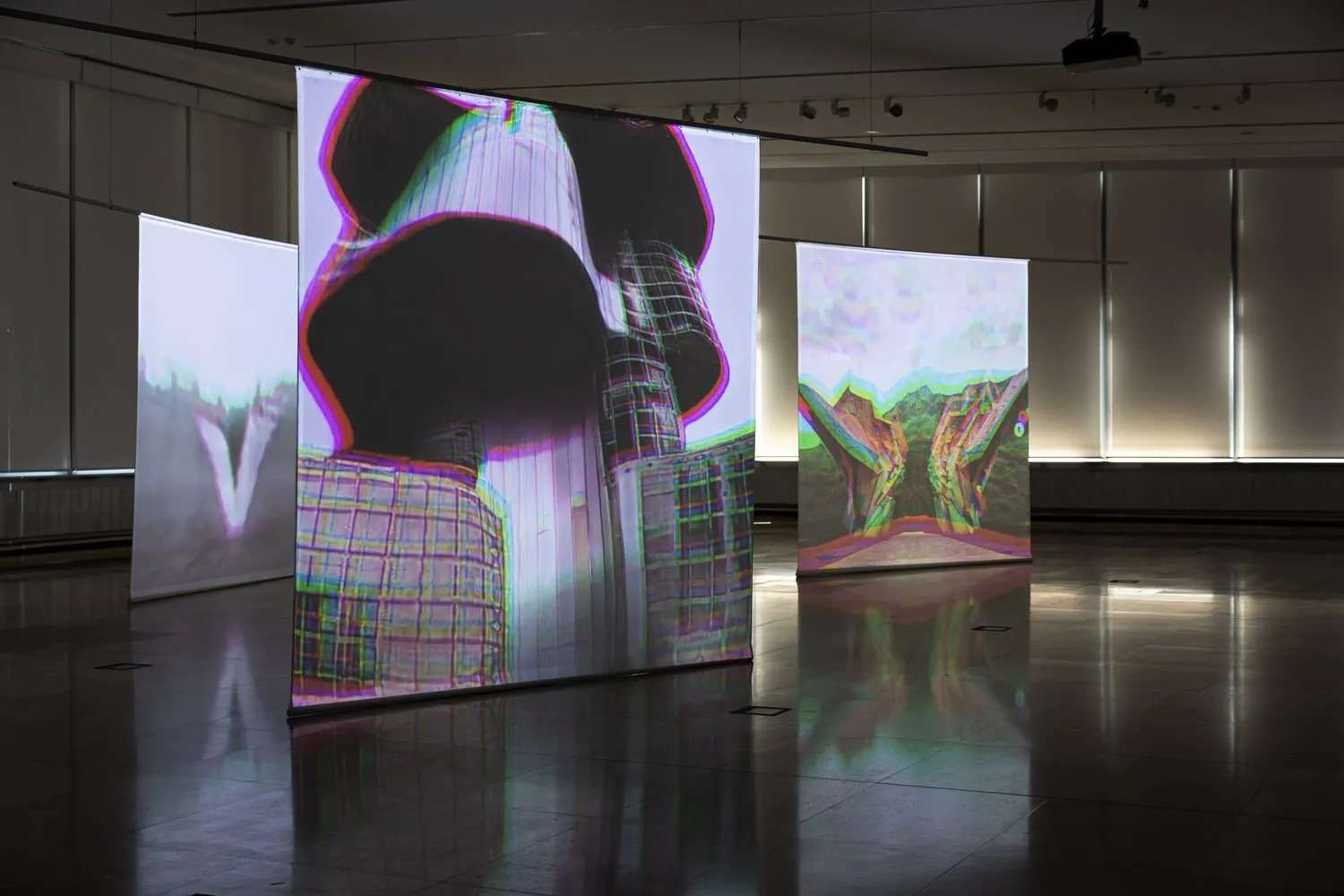
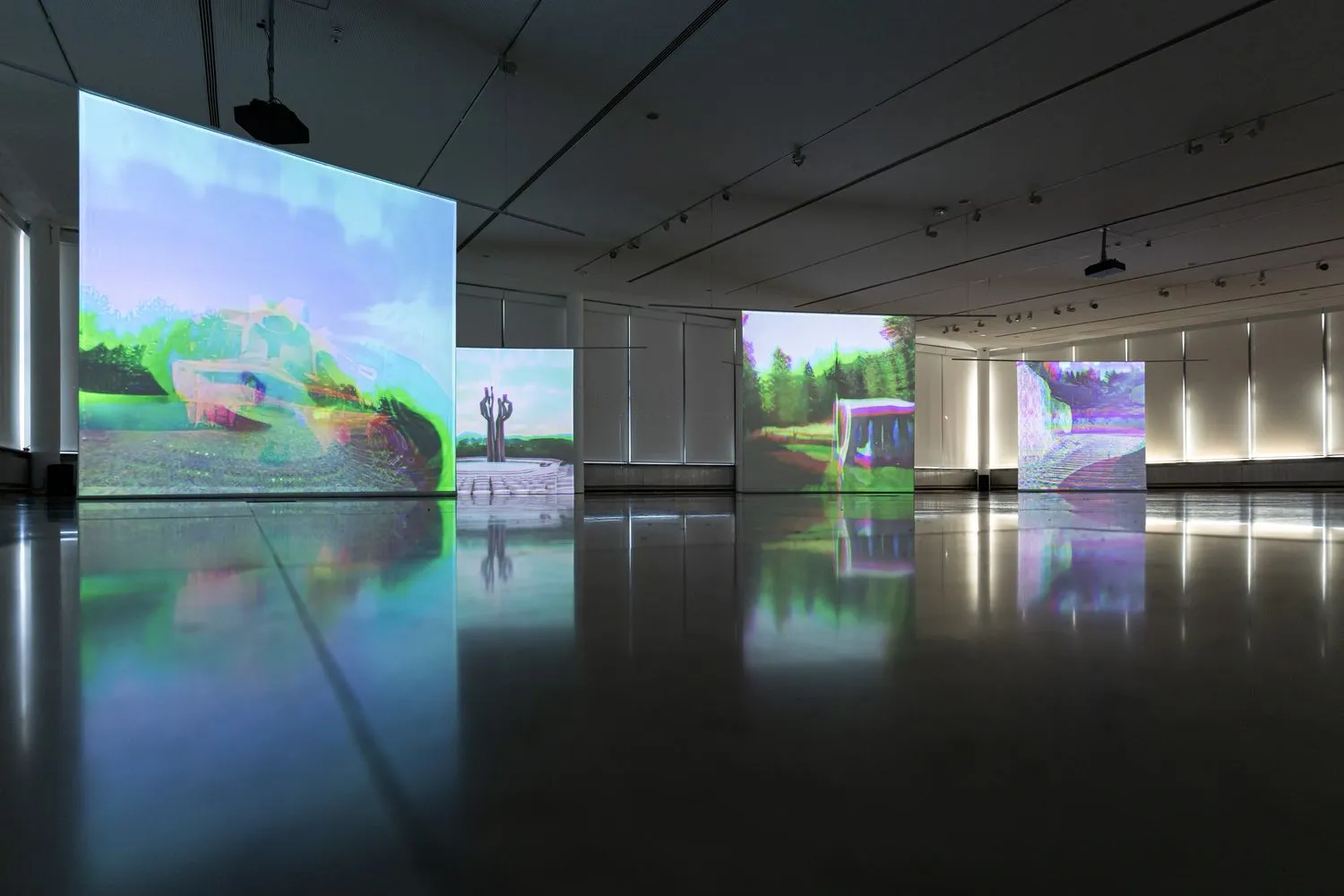
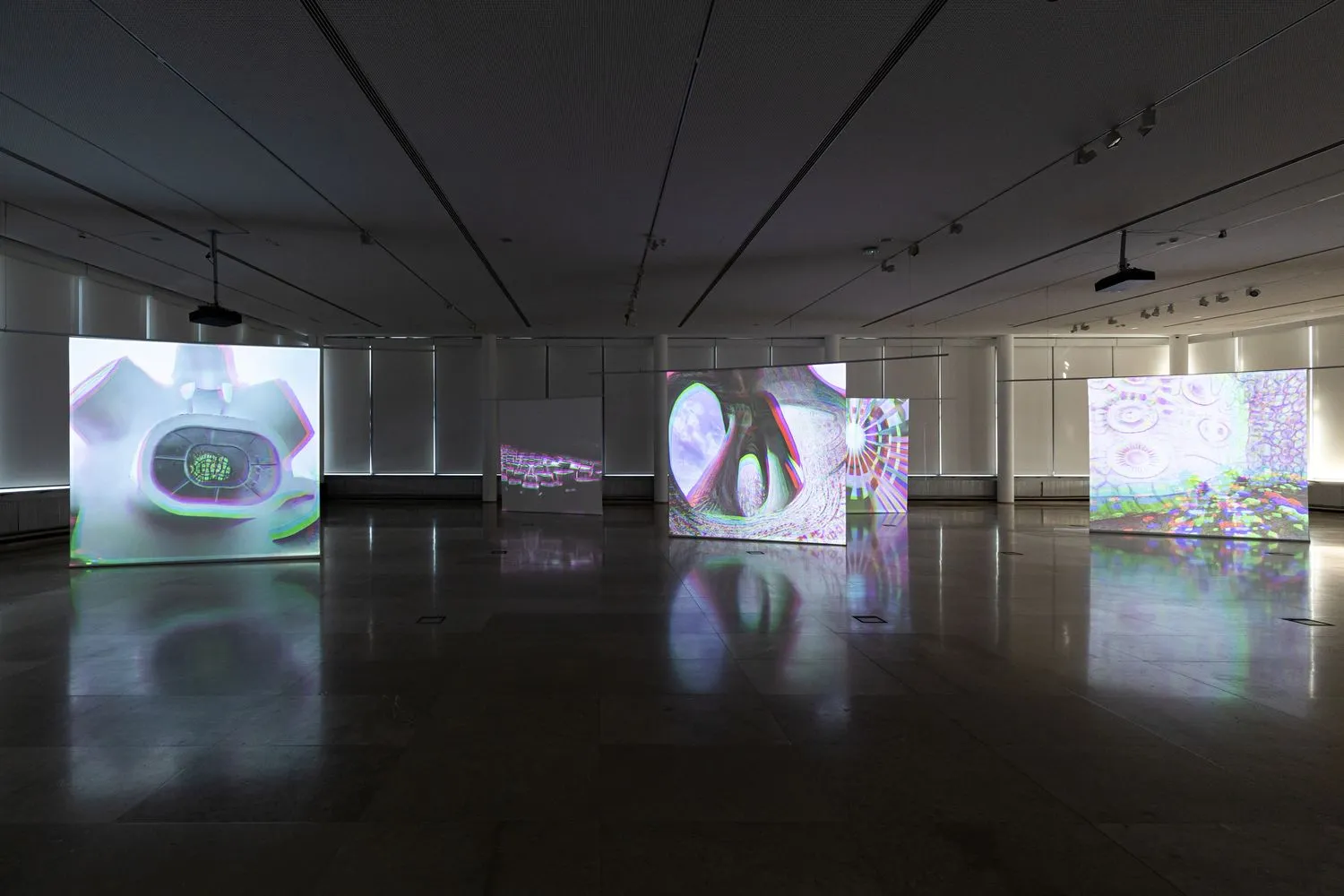
Yugoslav collectivism, self-management, and antifascist struggle, which informed architectural imagination and defined social reality, survive today only as marginalized relics, symbols of emancipation that the region, marred by ethnonationalist wars, resolutely rejects. Besides regional processes of forgetting, this heritage is also sidelined against the heroic narratives of European unification, which eradicate the emancipatory potential of socialist struggle and overwrite European economic neo-imperialism.
The monuments of the Yugoslav past, their materiality, and reimagining through AI, are an open-ended construction of associations with audio backup of familiar sounds of group travels—the noise of the community-in-building around the antifascist and socialist struggle, and the speeches given by the Yugoslav president Tito—that remain tangled with the general noise of the space, creating a soundscape that invited close listening, although the effort was constantly hampered.
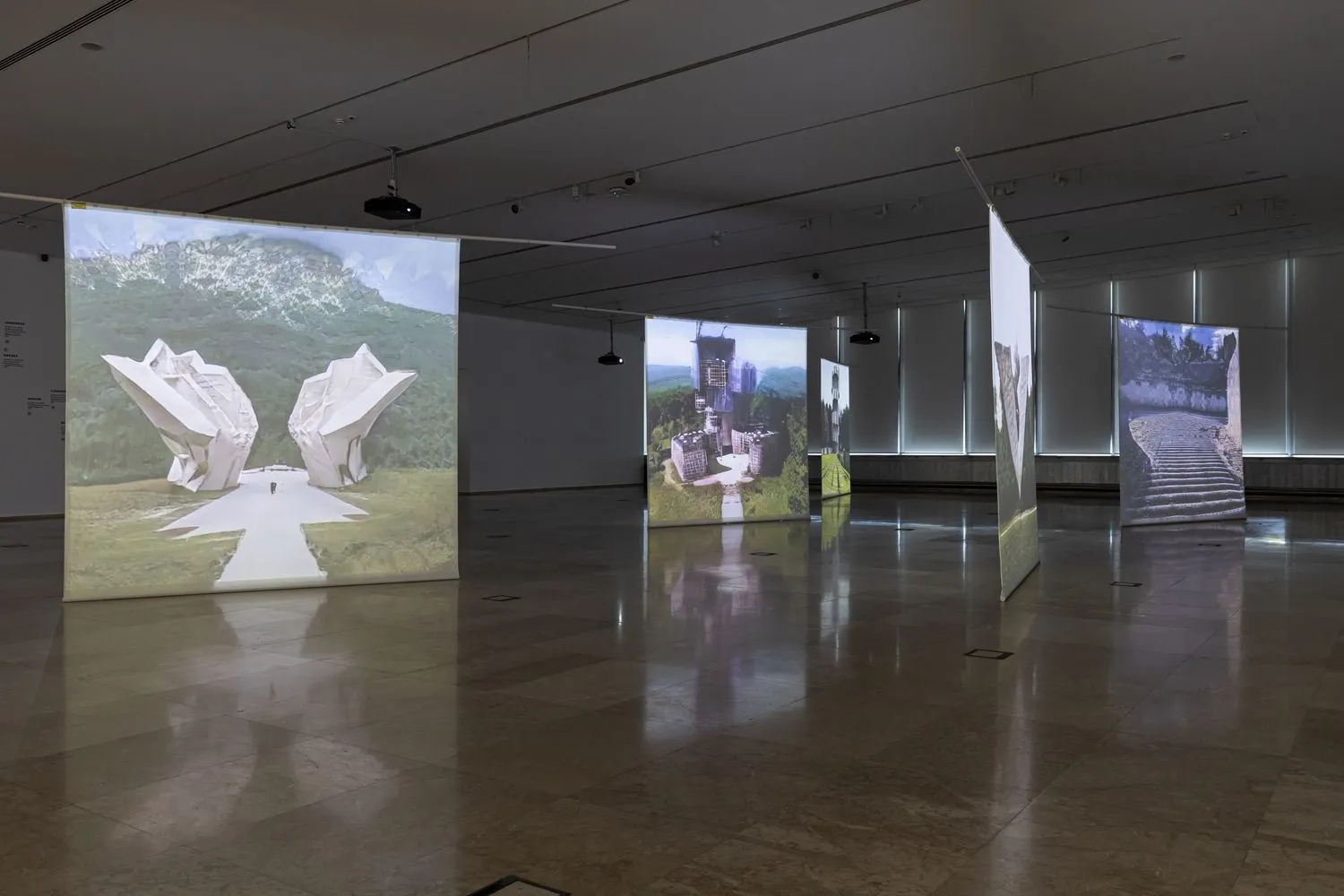
With the monuments constantly generating and disintegrating in the video loop, their presence and significance seem also to oscillate between their political emancipatory potential, their antifascist symbolism, and pure aesthetic pleasure, induced through the interplay of forms, perspectives, and colours. This is a dynamism that continues, and which shapes public discourse on Yugoslavia and its heritage: from a revolutionary, emancipatory project that harbingers politics pertinent to the present global sliding towards the right, to an imaginary place, often perceived as imposed, forgotten, and yet still uncannily attractive, this attraction covering a spectrum of segmented memories.
Miljački's The Pilgrimage entered these tensions by offering a space for reflection, with the vastness of the museum’s hall where the exhibit was held suitable for recluse and contemplation. The author did not offer easy answers or solutions; instead, she invited visitors on a pilgrimage into one's consciousness, inherent knowledge, and memory, to navigate what has passed, but also what is coming. The monuments, present in fragments, constantly appearing and disappearing before one's eyes, are humble, fading, almost shy specters from the past, but also lighthouses, reappearing, beaming with emancipatory possibilities that demand critical attention.
The exhibition The Pilgrimage ran at the Museum of Yugoslavia in Belgrade until September 2nd, 2025.